Etiqueta "Diseño de Máquinas"
Se han encontrado 6 Coincidencias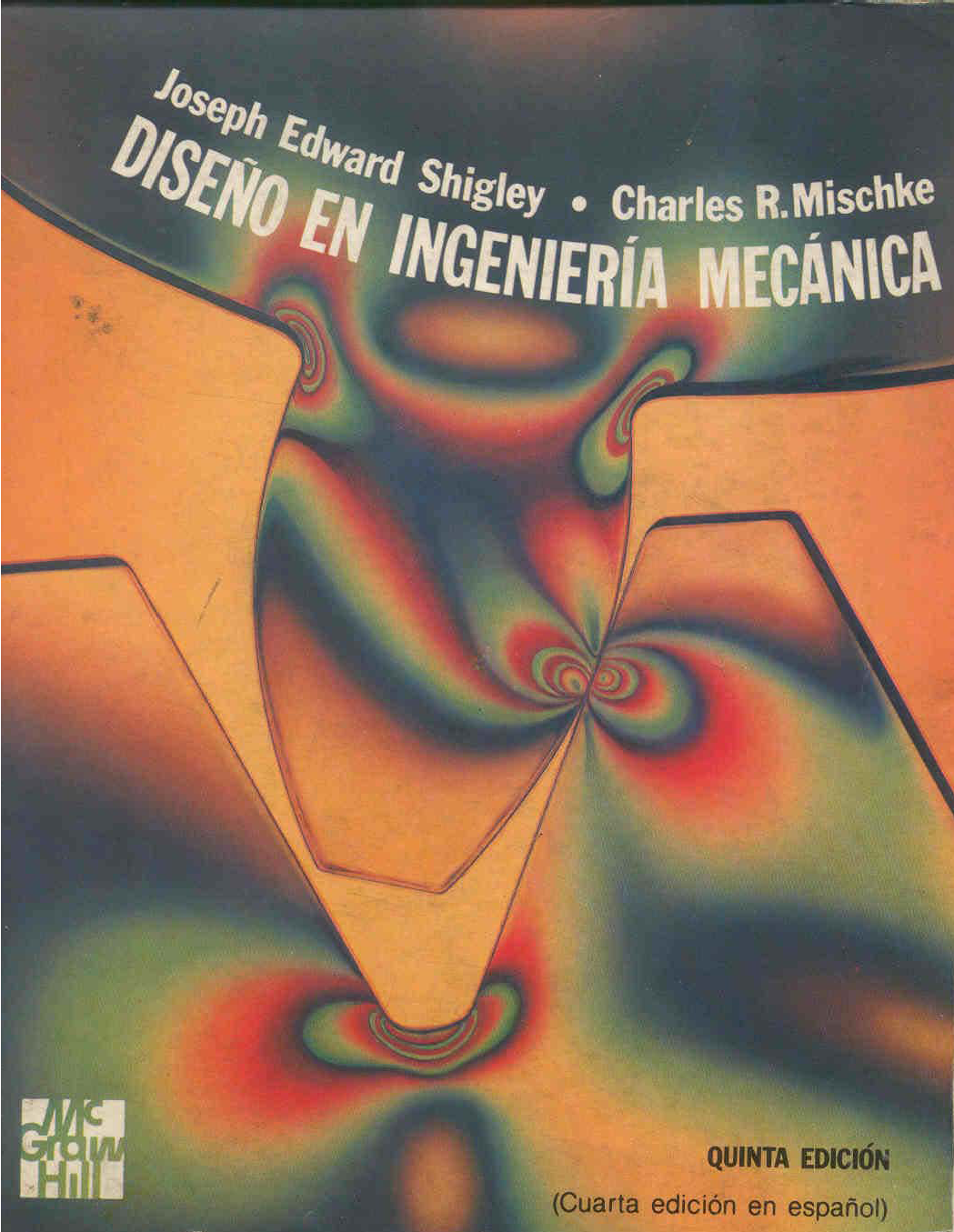
Diseño Ingeniería Mecánica
189 Visitas | 464 Descargas | 2013-10-01 14:38:58 | efirvida
Este libro ha sido escrito para estudiantes de ingeniería que inician el estudio de un curso de Diseño en Ingeniería Mecánica. Tales estudiantes han adquirido ya un conjunto de herramientas de ingeniería consistente, en esencia, en matemáticas, lenguajes de computación y aptitud para utilizar su idioma para expresarse adecuadamente en forma verbal y escrita. El diseño mecánico requiere además un gran caudal de conocimientos de geometría; por consiguiente, otra herramienta útil sera la capacidad de bosquejar y dibujar con corrección las diversas configuraciones de elementos técnicos que surjan. Los estudiantes se habrán capacitado también en diversas ciencias de ingeniería, como física, mecánica analítica, materiales y procesos, así como en las ciencias fluídicas y térmicas. Estos elementos, las herramientas intelectuales (conocimientos y destrezas), constituyen el fundamento del ejercicio de toda ingeniería. En esta fase de la educación a nivel de licenciatura conviene exponer algunos aspectos de la profesión del ingeniero. Los estudios de la carrera deben integrar y aplicar los conocimientos y las destrezas técnicas en la consecución de un objetivo de ingeniería. Las presiones que se ejercen sobre los planes de estudios de la licenciatura en ingeniería de la actualidad exigen que lo anterior se realice de la manera más eficiente. La mayoria de los profesores coinciden en que el diseño mecánico lleva a cabo la integración y aplicación de un mayor número de ciencias y técnicas que cualquiera otra carrera profesional. El diseño mecanico es también la parte medular y la base de otros estudios de diseño y aplicación profesional de la Ingeniería Mecánica.
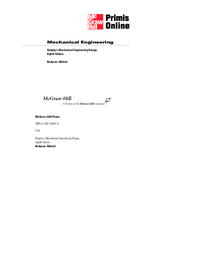
Shigley's Mechanical Engineering Design
136 Visitas | 188 Descargas | 2013-10-01 13:54:12 | efirvida
This text is intended for students beginning the study of mechanical engineering design. The focus is on blending fundamental development of concepts with practical specification of components. Students of this text should find that it inherently directs them into familiarity with both the basis for decisions and the standards of industrial components. For this reason, as students transition to practicing engineers, they will find that this text is indispensable as a reference text.
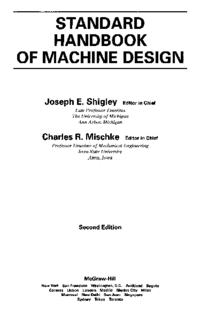
STANDARD HANDBOOK OF MACHINE DESIGN
85 Visitas | 272 Descargas | 2013-10-01 16:06:08 | efirvida
There is no lack of good textbooks dealing with the subject of machine design. These books are directed primarily to the engineering student. Because of this, they contain much theoretical material that is amenable to mathematical analysis. Such topics are preferred by the instructor as well as the student because they appeal to the student's scientific, mathematical, and computer backgrounds; are well-defined topics with a beginning, a middle, and an end; and are easy to use in testing the student's knowledge acquisition. The limited amount of time available for academic studies severely limits the number of topics that can be used as well as their treatment. Since textbooks devoted to mechanical design inevitably reflect this bias, there is great need for a handbook that treats the universe of machine design—not just the readily teachable part.
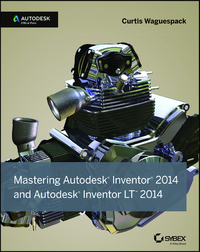
Mastering Autodesk® Inventor® 2014 and Autodesk® Inventor LT™ 2014
115 Visitas | 121 Descargas | 2015-07-16 16:23:29 | efirvida
The Autodesk® Inventor® program was introduced in 1999 as an ambitious 3D parametric modeler based not on the familiar AutoCAD® software programming architecture but instead on a separate foundation that would provide the room needed to grow into the fully featured modeler it is now, over a decade later. Autodesk Inventor 2014 continues the development of Autodesk Inventor with improved modeling, drawing, assembly, and visualization tools. Autodesk has set out to improve this release of Autodesk Inventor by devoting as much time and energy to improving existing tools and features as they have to adding new ones. With this book, the sixth edition of Mastering Autodesk Inventor and Autodesk Inventor LT, I have set out to update the existing pages and add new content and exercises. In these pages, you will f nd detailed information on the specif cs of the tools and the principles of sound parametric design techniques. Some readers will f nd this book works best for them as a desktop reference, whereas others will use it primarily for the step-by-step tutorials. With this in mind, I’ve worked to shape the pages of this book with a mix of reference material, instructional steps, and tips and hints from the real world
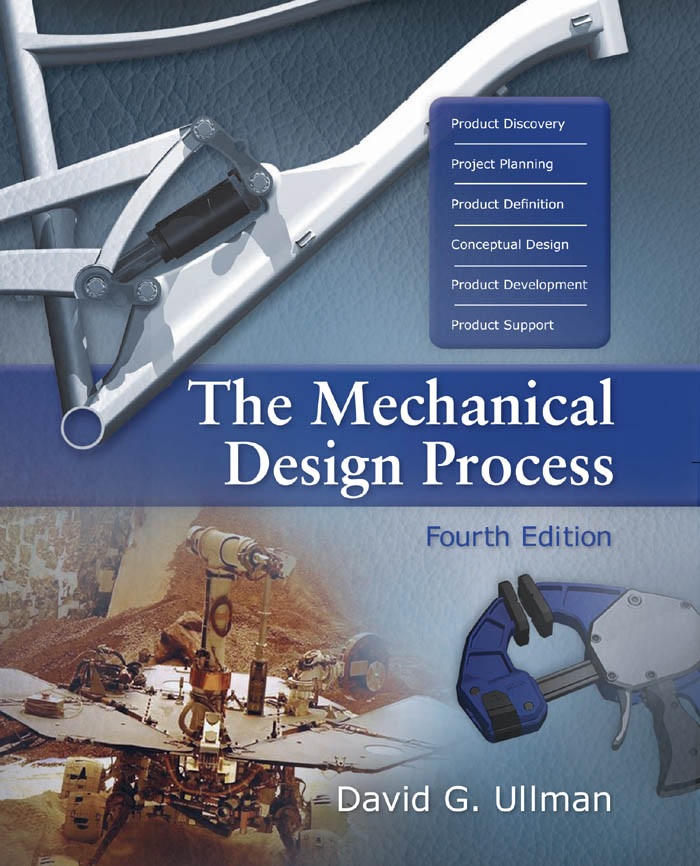
The Mechanical Design Process
Diseño Mecánico
85 Visitas | 73 Descargas | 2016-03-03 17:15:46 | aalvarezc
David G. Ullman is an active product designer who has taught, researched, and written about design for over thirty years. He is president of Robust Decisions, Inc., a supplier of software products and training for product development and decision support. He is Emeritus Professor of Mechanical Design at Oregon State University. He has professionally designed fluid/thermal, control, and transportation systems. He has published over twenty papers focused on understanding the mechanical product design process and the development of tools to support it. He is founder of the American Society Mechanical Engineers (ASME)—Design Theory and Methodology Committee and is a Fellow in the ASME. He holds a Ph.D. in Mechanical Engineering from the Ohio State University.
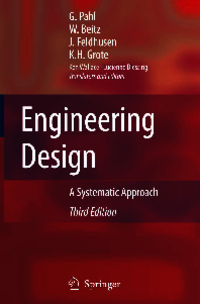
Engineering Design A Systematic Approach
Diseño Mecánico
92 Visitas | 76 Descargas | 2016-03-03 17:08:50 | aalvarezc
Sadly, just one year after the publication of the fourth German edition in 1997, my co-author Wolfgang Beitz died after a short but severe illness. His many outstanding contributions to engineering design, including his contribution to this book, were honoured in a memorialcolloquium held in Berlin. It would have made me very happy if he had been able to see the continuing success of our book, including its translation into Portuguese. Our collaboration was a perfect one— always fruitful, always beneficial. I am deeply grateful to him. The book, “Pahl/Beitz—Konstruktionslehre”, has now been translated into eight languages and recognized as an international reference text. For reasons of continuity, our publisher Springer wanted to pub- lish a fifth German edition of the book. To assist with this task two former students of Wolfgang Beitz became involved: Professor Dr.-Ing. Jörg Feldhusen and Professor Dr.-Ing. Karl-Heinrich Grote, both of whom have continually promoted and expanded his ideas. Professor Feldhusen worked for many years as a senior designer in the auto- motive industry and is now at RWTH Aachen University, succeeding Professor Dr. Ing. R. Koller. Professor Grote has considerable experience of teaching design and running projects as a Professor in the USA, and is now at the Otto-von-Guericke University in Magdeburg. He succeeded Professor Beitz as the Editor of the Dubbel Handbook for Mechanical Engineering.
Contribuir
Usted puede contribuir con Libros UCLV, es importante para nosotros su aporte..
Contribuir